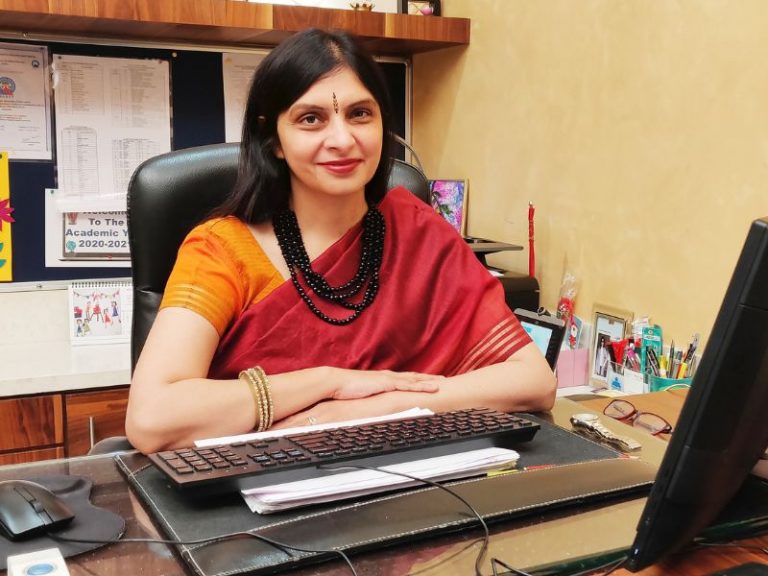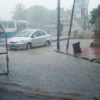Interview: Kavita Sanghvi, Principal, Chatrabhuj Narsee Memorial School, Vile Parle
Kavita Sanghvi, Principal, Chatrabhuj Narsee Memorial (CNM) School, Vile Parle, Mumbai is one of the 46 country-wide teachers to be selected by the Union Ministry of Education for the National Awards for Indian Teachers. She will receive the award from President Droupadi Murmu on September 5, celebrated as Teacher’s Day in honour of Dr Sarvepalli Radhakrishnan, the first Vice-President of India.
Having earned her master’s in physics and MPhil in education from Mumbai University, Kavita Sanghvi has over 22 years of experience as an educator. Speaking to Dipta Joshi of EducationWorld, she talks about her concerns about the gender gap in STEM and her efforts to promote experiential STEM learning amongst students.
Q. What is your approach towards the teaching-learning process?
A. I have a different lens to the teaching-learning process and believe it has to be about our students teaching us rather than us teaching them. Keeping this in mind, in 2019 I introduced a new STEM-based (science, technology, engineering, and mathematics) subject for students of class I-VII called ‘Global Outlook’ (GO). The subject helps students to explore the applications of everyday things- from clothes, flooring, laundry, etc. with a global outlook. I personally designed the lesson plans and undertook teacher training.
For instance, for our chapters on flooring and fabrics etc. the student does a deep dive in researching the flooring in his/her vicinity and in the world. As part of the activities, students are asked to redesign the flooring using eco-friendly materials or experiment with fabrics while designing a dress. Thus students learn to evaluate, study the feasibility etc., and explain it to us, teachers. They know much more than us on the subject so they are doing the teaching.
Q. How have you integrated the GO subject with the school’s curriculum?
A. We have managed to do that by splitting our class of 40 and getting one half of them to attend art class and the other to attend GO. This helps the teacher get a block period and do justice to her students. She gives them the topic, gets them to research, collaborate and create in the class. Each group gets 15 days to do their project.
Q. What experience as an educator had a significant impact on you?
A. Working with MET Rishikul Vidyalaya which followed the international Cambridge curriculum and currently with CNM School which follows the CISCE curriculum had a big impact on my thinking because I had to unlearn and relearn everything and, in the process, I understood new aspects of providing holistic education. Another big moment for me was getting selected as one of the 100 India-based teachers for the ‘Global Teachers Accreditation’ in 2013. Organised by the British Council for continuous professional teacher development, I realised the importance of the action research activities which again made a significant impact. Research has since become a very important component for me and throughout my journey as an educator, I have kept trying to reinvent and introduce new things.
Q. Introducing STEM-based education has been your forte. What kind of an impact has it had on the students?
A. I am keen on reducing the gender gap in STEM education but don’t believe in STEM labs where students are taught just robotics. I want my students to connect STEM learning in their daily life and see its application in everyday components. As a subject GO already merges STEM skill building with other subjects to broaden the students’ insights on global issues.
We also organise an event called, ‘HI-STEAM’ which focuses on teaching the history of major discoveries or inventions through the ages. The week-long fest sees participation from classes I-XII. Students are expected to work on a project based theme and evaluated. This year the theme was ‘Gamification in STEAM’ wherein students had to create offline and online games. This way the concepts are consolidated and the learning came from the student.
My action research for the past four years shows that our efforts have borne fruits with more students likely to take up science in higher classes. Earlier, we had many students drop science in class IX.
Q. How have the tools of engagement changed considering students today are tech-savvy?
A. I would say the tools of engagement have changed significantly. Students are driving the classroom today and you have to ensure they have invested in the learning process. If students are not interested, they are not learning! That said, they also need to bear the responsibility for the work they provide. When they created games for the fest this year, they were aware the game had to be interesting enough for their peers.
We have also involved parents in our programmes and that has led to parents too appreciating STEM subjects. For instance, our parents were involved in making chocolates when the students were learning about cocoa beans.
Education today is interdisciplinary and it has to stimulate critical thinking in the students. So when they create a shoe there is a lot of creativity and there is interdisciplinary learning. For instance, shoe types are dependent on the geography of the place, they learn mathematics while taking measurements, etc.
Q. As a leader, what was your experience during the online teaching-learning phase?
A. I undertook two action research activities during the lockdown the results of which are eye-openers for any school leader. I tested the ‘efficacy of online assessments’ and think we educators have been taken for a ride. I had 660 students telling me that they or their friends indulged in malpractices. So the authenticity of online assessments is questionable. As a leader, I realised and modified many of our practices to get the true picture. We included conducting surprise checks on students by visiting their residences during online exams.
The other activity was regarding bridging students’ learning gaps during COVID. We conducted a diagnostic test, analysed and undertook a four-month programme to bridge the gap. This July we did another test. We realised that despite students returning to the classes, despite going out of our way to bridge the gap, we were able to succeed only 75 percent because many parents were not interested in sending their children to the extra classes. So though as educators we are doing our best, we cannot have 100 percent results unless both students and parents also share the responsibility.
Q. What would be your advice to other educators?
A. I think everyone is doing their best but along the way, I have learned that if we want to share knowledge then we have to keep earning knowledge too. You have to keep on studying all the time. I keep doing online courses all the time, I am also doing my PhD in education and am creating a STEM OERC (open education resource course) that will help other teachers.
Also read: Teachers who went beyond call of duty to ensure learning continuity

















Add comment